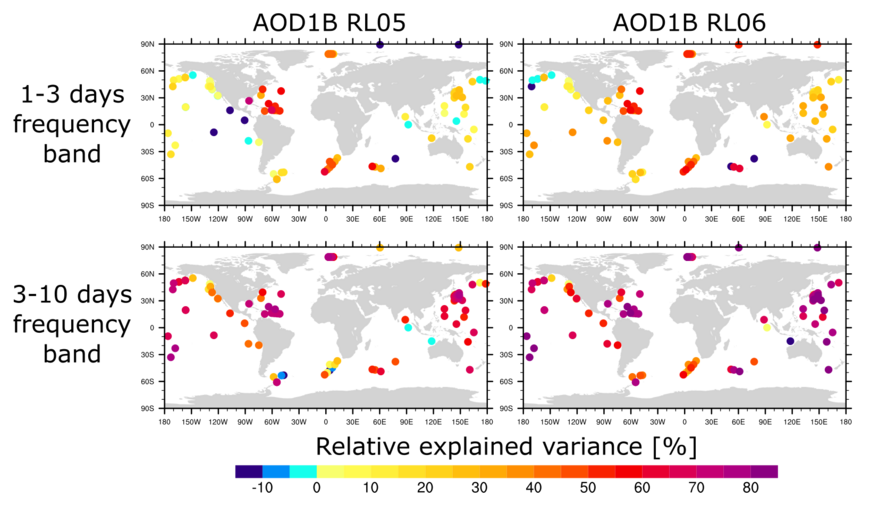In Situ Ocean Bottom Pressure
Both numerical ocean model experiments and new releases of GRACE gravity fields require validation against independent observations. Bottom pressure measurements recorded at the sea-floor provide such an opportunity. We use data from a number of globally distributed in situ OBP recorders from various institutions as compiled by Macrander et al. (2010). In situ records are carefully post-processed in order to remove discontinuities and non-linear drift; to remove effects from re-deployments of sensors after maintenance; and to isolate and remove tidal signals (Pawlowicz et al., 2002).
From each dataset that is to be validated, data is extracted from four grid points closest to the in situ station and linearly interpolated to the station's actual location. In order to focus on specific frequency bands, we can apply a series of Butterworth low pass filters. Typically, we perform the validation for three frequency bands: 1-3, 3-10 and 10-30 days. The agreement with the in situ observations is usually expressed in relative explained variance, i.e. the measured variance explained by the numerical model or the GRACE gravity field.

References
Dobslaw H, Bergmann-Wolf I, Dill R, Poropat L, Thomas M, Dahle C, Esselborn S, Konig R, Flechtner F (2017) A new high-resolution model of non-tidal atmosphere and ocean mass variability for de-aliasing of satellite gravity observations: AOD1B RL06. Geophys J Int, 2011(1):263-269, DOI 10.1093/gji/ggx302
Macrander A, Boening C, Boebel O, Schroeter J (2010) Validation of GRACE gravity fields by in-situdata of ocean bottom pressure. In: System Earth via Geodetic-Geophysical Space Techniques, Springer, Berlin
Pawlowicz R, Beardsley B, Lentz S (2002) Classical tidal harmonic analysis including error estimates in MATLAB using T_TIDE. Comput Geosci, 28:929-973, DOI 10.1016/S0098-3004(02)00013-4

